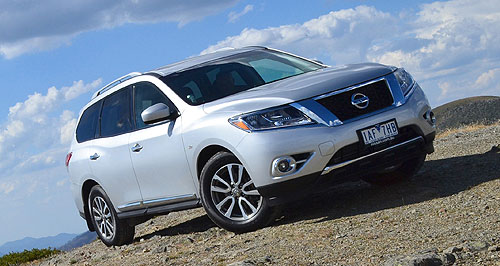News - Market Insight - Market Insight 2014Market Insight: Asian imports take back seatState of origin: A 15 per cent increase in sales of the BMW X5 has been vital for the German luxury brand this year, and has played a key role in pushing up sales of American-built vehicles. Japanese, Thai, Korean car sales down in Oz this year while US, German models boom11 Jul 2014 By TERRY MARTIN THE leading countries supplying motor vehicles in Australia – Japan, Thailand and South Korea – have taken a major hit in the first half of 2014 while the United States and Germany have increased their influence over new-vehicle sales. New registrations of Japanese cars are down 9.8 per cent to the end of June after taking a 12.4 per cent hit last month alone, Thai-built vehicles are down 7.4 per cent and those made in South Korea are 6.1 per cent in arrears compared to the first half of 2013. On the flipside, sales of German-built vehicles are up 18.3 per cent this year to be only 8050 units shy of Australian-built cars (-2.5 per cent YTD) as the the fifth-biggest source of vehicles behind the local manufacturers and the dominant Asian countries listed above. Next in line are vehicles from the US, which has experienced a substantial 53.6 per cent rise to be firmly entrenched in the top-five source countries outside Australia, well ahead of England (-13.2 per cent) and the next-biggest country of origin, India, which is up 17.1 per cent YTD. China, on the other hand, has fallen 49.6 per cent to be 18th on the ever-growing list of countries, behind a host of European nations – Belgium, France, Italy, Spain, Poland, the Czech Republic and Slovak Republic – as well as Argentina, Mexico and South Africa. The figures broadly reflect the fortunes of the major motor companies in Australia this year, which as GoAuto has reported sees Chinese brands on a steep decline, high-volume Japanese brands either struggling or treading water, while German brands and America’s Jeep are playing a key role in restricting the overall market downturn to just 2.4 per cent YTD. However, there is more to it than that, with various under-performing brands and specific models dragging down some of the key Asian source countries – Honda’s heavy reliance on Thailand and Holden’s on South Korea, for example – and supply issues prompting some companies to source from outside traditional countries, such as Hyundai and Kia turning to Eastern Europe given supply restrictions at home. Thailand’s downturn also reflects lower business vehicle sales and confidence in Australia this year, with the pick-up/cab-chassis segment – dominated by Thai-built utes and a key barometer of the Aussie market – down 7.2 (4x4) and 1.4 per cent (4x2) YTD, despite a surge in private 4x4 sales last month. The total LCV market is down 5.3 per cent this year, while business and rental vehicle sales are down 8.9 and 4.9 per cent respectively. A significant drop-off in demand for micro-cars (-33 per cent) and volume-selling light cars (-11.9 per cent), and major declines for several brands in the all-important mainstream small-car segment (-2.8 per cent overall), is also affecting Thai-built vehicle sales. South Korean brands Hyundai and South Korea are in positive territory, but Holden – a self-declared aspiring market leader – is a major importer of Korean-built cars, most of which are performing poorly this year. Among them, Barina, Barina Spark and Captiva 5 and 7 are down between 20 and 31 per cent this year, while the Malibu, after just over a year in the marketplace, is averaging only 164 sales a month YTD for a tiny 4.0 per cent share of its segment and seventh place on the table. Across the Pacific, the boom in US-built vehicles extends well beyond Jeep’s status as the fastest-growing major auto brand in Australia (+43.2 per cent YTD), which is offsetting declines for Chrysler and Dodge but also points to strong demand for SUVs and America’s increasing importance as a manufacturing hub for these – and other primarily US-targeted – vehicles. That Mercedes-Benz and BMW SUV sales are going from strength to strength is pushing up the US-built vehicle sales numbers in Australia – a trend that will continue as both brands enter new SUV segments and increase capacity at their North American factories – while others including Toyota (with Kluger) and Nissan (with Pathfinder) are also now adding volume to the US ledger. Expect much more volume from North America in the years ahead as the world’s major car companies continue to invest there. There is a Ford Mustang on its way, and an Edge SUV to come from Canada when the locally built Territory reaches the end of the line in conjunction with the closure of Ford’s Australian manufacturing operations in 2016. Holden, too, is expected to look Stateside for replacements of its Australian-built large models once it closes its factories here in 2017, and while Thailand might be the obvious source for Camry when Toyota pulls out at the same time, who’s to say that it won’t come out of Kentucky?These questions will be answered before too long, but significant change is already upon us in Australia – not just in terms of the brands consumers favour, but where their cars are built.  Read more |
Click to shareMarket Insight articlesResearch Market Insight Motor industry news |


















Facebook Twitter Instagram